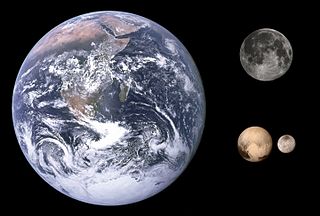
In astronomy, a double planet is a binary satellite system where both objects are planets, or planetary-mass objects, that share an orbital axis external to both planetary bodies.

Isaac Asimov was an American writer and professor of biochemistry at Boston University. During his lifetime, Asimov was considered one of the "Big Three" science fiction writers, along with Robert A. Heinlein and Arthur C. Clarke. A prolific writer, he wrote or edited more than 500 books. He also wrote an estimated 90,000 letters and postcards. Best known for his hard science fiction, Asimov also wrote mysteries and fantasy, as well as popular science and other non-fiction.
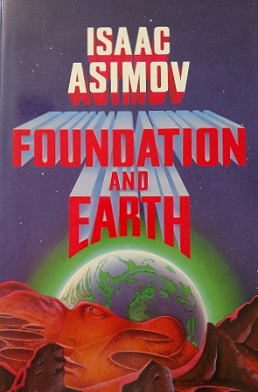
Foundation and Earth is a science fiction novel by American writer Isaac Asimov, the fifth novel of the Foundation series and chronologically the last in the series. It was published in 1986, four years after the first sequel to the Foundation trilogy, which is titled Foundation's Edge.
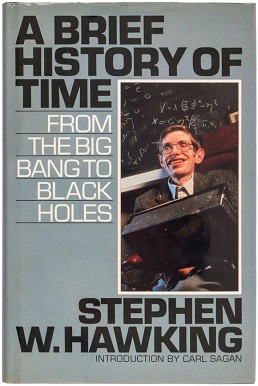
A Brief History of Time: From the Big Bang to Black Holes is a book on theoretical cosmology by English physicist Stephen Hawking. It was first published in 1988. Hawking wrote the book for readers who had no prior knowledge of physics.
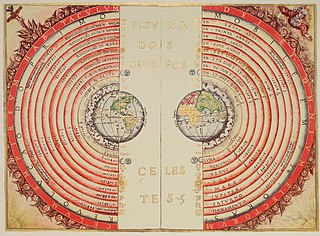
In astronomy, the geocentric model is a superseded description of the Universe with Earth at the center. Under most geocentric models, the Sun, Moon, stars, and planets all orbit Earth. The geocentric model was the predominant description of the cosmos in many European ancient civilizations, such as those of Aristotle in Classical Greece and Ptolemy in Roman Egypt, as well as during the Islamic Golden Age.

Janet Opal Asimov, usually written as J. O. Jeppson, was an American science fiction writer, psychiatrist, and psychoanalyst.

The Gods Themselves is a 1972 science fiction novel written by Isaac Asimov, and his first original work in the science fiction genre in fifteen years. It won the Nebula Award for Best Novel in 1972, and the Hugo Award for Best Novel in 1973.
This is a bibliography of the books written or edited by Isaac Asimov, arranged alphabetically. Asimov was a prolific author, and he engaged in many collaborations with other authors. This list may not yet be complete. The total number of books listed here is over 500. Asimov died in 1992 at age 72; a small number of his books were published posthumously.
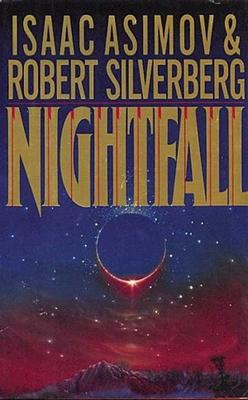
"Nightfall" is a 1941 science fiction short story by the American writer Isaac Asimov about the coming of darkness to the people of a planet ordinarily illuminated by sunlight at all times. It was adapted into a novel with Robert Silverberg in 1990. The short story has been included in 48 anthologies and has appeared in six collections of Asimov's stories. In 1968, the Science Fiction Writers of America voted "Nightfall" the best science fiction short story written prior to the 1965 establishment of the Nebula Awards and included it in The Science Fiction Hall of Fame Volume One, 1929–1964.

Fantastic Voyage II: Destination Brain is a science fiction novel by American writer Isaac Asimov, published in 1987. It is about a group of scientists who shrink to microscopic size in order to enter a human brain so that they can retrieve memories from a comatose colleague.
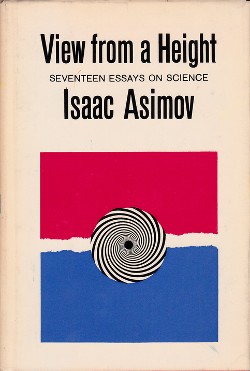
View from a Height is a collection of seventeen scientific essays by American writer and scientist Isaac Asimov. It was the second of a series of books collecting essays from The Magazine of Fantasy and Science Fiction, written between 1959 and 1962. It was first published by Doubleday & Company in 1963. The book received a review in Science Magazine. and The American Biology Teacher.
Mesoplanets are planetary-mass objects with sizes smaller than Mercury but larger than Ceres. The term was coined by Isaac Asimov. Assuming size is defined in relation to equatorial radius, mesoplanets should be approximately 500 km to 2,500 km in radius.

Fact and Fancy is a collection of seventeen scientific essays by American writer and scientist Isaac Asimov. It was the first in a series of books collecting his essays from The Magazine of Fantasy and Science Fiction, and Asimov's second book of science essays altogether. Doubleday & Company first published it in March 1962. It was also published in paperback by Pyramid Books as part of The Worlds of Science series.

Discovery and exploration of the Solar System is observation, visitation, and increase in knowledge and understanding of Earth's "cosmic neighborhood". This includes the Sun, Earth and the Moon, the major planets Mercury, Venus, Mars, Jupiter, Saturn, Uranus, and Neptune, their satellites, as well as smaller bodies including comets, asteroids, and dust.

The Sun Shines Bright is a collection of seventeen nonfiction science essays by American writer and scientist Isaac Asimov. It was the fifteenth of a series of books collecting essays from The Magazine of Fantasy and Science Fiction. It was first published by Doubleday & Company in 1981.
Wronger than wrong is a statement that equates two errors when one of the errors is clearly more grave than the other. The mistake was discussed in Isaac Asimov's book of essays The Relativity of Wrong as well as in a 1989 article of the same name in the Fall 1989 issue of the Skeptical Inquirer:
When people thought the Earth was flat, they were wrong. When people thought the Earth was spherical, they were wrong. But if you think that thinking the Earth is spherical is just as wrong as thinking the Earth is flat, then your view is wronger than both of them put together.

The Planet That Wasn't is a collection of seventeen scientific essays by American writer and scientist Isaac Asimov. It was the twelfth of a series of books collecting essays from The Magazine of Fantasy and Science Fiction. These essays were first published between December 1974 and April 1976. It was first published by Doubleday & Company in 1976.
In a writing career spanning 53 years (1939–1992), science fiction and popular science author Isaac Asimov (1920–1992) wrote and published 40 novels, 383 short stories, over 280 non-fiction books, and edited about 147 others.
This is a bibliography of American science fiction author Kim Stanley Robinson.
Depending on the counting convention used, and including all titles, charts, and edited collections, there may be currently over 500 books in Isaac Asimov's bibliography—as well as his individual short stories, individual essays, and criticism. For his 100th, 200th, and 300th books, Asimov published Opus 100 (1969), Opus 200 (1979), and Opus 300 (1984), celebrating his writing.














